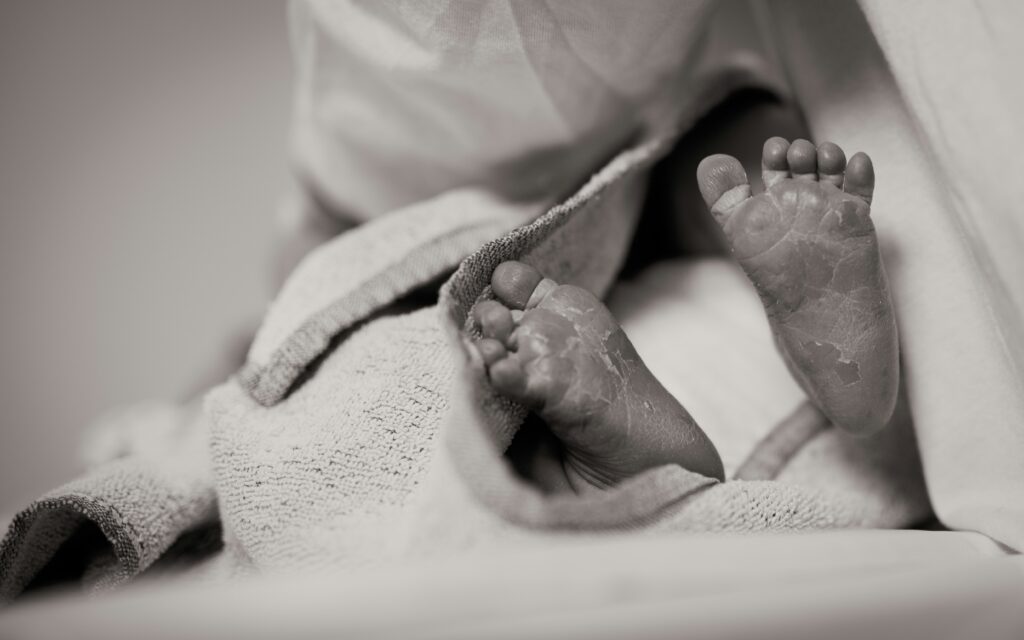The journey to bringing a baby into the world is deeply personal, and there’s no one-size-fits-all approach to giving birth. Understanding the different types of birth can help you feel more confident, informed, and empowered as you prepare for this life-changing moment.
In this blog, we’ll explore three common types of birth: natural birth, water birth, and cesarean section (C-section). We’ll break down what each entails, the pros and cons, and tips to help you decide what might be best for you and your baby.
What Is Natural Birth?
Natural birth typically refers to delivering a baby vaginally without the use of pain medication or significant medical intervention. This method is often chosen by those who want a hands-on, holistic approach to childbirth.
What Happens During Natural Birth?
- Labour Stages: Natural birth progresses through the early, active, and pushing stages of labour.
- Pain Management: Instead of epidurals or other medications, techniques like breathing exercises, massage, hypnobirthing, or movement are used to manage pain.
- Environment: Natural births can happen in hospitals, birth centres, or even at home with the assistance of a midwife or doula.
Pros of Natural Birth
- Minimal Medical Interventions: This reduces the risk of side effects from medication or procedures.
- Faster Recovery: Women who have natural births often recover more quickly compared to those who have C-sections.
- Increased Bonding: Immediate skin-to-skin contact is more easily facilitated.
Cons of Natural Birth
- Pain Management: The intensity of contractions can be challenging without medication.
- Unpredictability: Complications may arise that require medical intervention.
- Physical Strain: Tearing or exhaustion can occur during the pushing stage.
Who Is Natural Birth Best For?
Women with low-risk pregnancies who want to avoid medical interventions often choose this method.

What Is Water Birth?
A water birth involves labouring and/or delivering in a tub of warm water. It’s an option for women seeking a more relaxed and less clinical birthing experience.
What Happens During a Water Birth?
- Labour in Water: You can labour in the tub, even if you don’t plan to deliver there.
- Delivery in Water: If you opt for a full water birth, your baby will be delivered underwater and brought to the surface immediately.
- Support Team: Midwives or doulas usually assist with water births, ensuring everything is safe and comfortable.
Pros of Water Birth
- Pain Relief: Warm water can help soothe and relax muscles, reducing the perception of pain.
- Gentle Transition for Baby: The water mimics the amniotic fluid environment, making the transition easier for the baby.
- Reduced Interventions: Water births often require fewer interventions, like episiotomies.
Cons of Water Birth
- Risk of Infection: The water environment increases the risk of contamination.
- Not for Everyone: Women with high-risk pregnancies or complications may not be eligible.
- Emergency Situations: If complications arise, transferring out of the tub may delay interventions.
Who Is Water Birth Best For?
Low-risk pregnancies with mothers seeking a calming, natural birth experience are ideal candidates for water birth.
What Is a C-Section?
A cesarean section (C-section) is a surgical procedure in which a baby is delivered through an incision in the abdomen and uterus. For instance, some C-sections are planned, and others are performed in response to complications during labour.
What Happens During a C-Section?
- Pre-Surgery: You’ll receive anaesthesia (typically a spinal block or epidural) to numb the lower half of your body.
- The Procedure: The surgeon makes an incision in your abdomen and uterus to deliver the baby.
- Post-Delivery: The baby is delivered within minutes, but stitching up the incision can take longer.
Pros of a C-Section
- Planned Timing: Scheduled C-sections allow for a predictable delivery date.
- Avoids Labor Pain: Since the procedure is surgical, you won’t experience contractions or vaginal delivery pain.
- Life-Saving: C-sections can be critical in emergencies, protecting both mother and baby.
Cons of a C-Section
- Longer Recovery: Recovery can take several weeks, and there’s a risk of surgical complications.
- Limited Immediate Bonding: Skin-to-skin contact may be delayed.
- Future Pregnancies: Having a C-section can influence options for future births (e.g., a higher likelihood of repeat C-sections).
Who Is a C-Section Best For?
C-sections are often the safest option in specific situations where vaginal delivery could pose risks to the mother or baby. Here are some scenarios where a C-section might be recommended:
- High-Risk Pregnancies: If the mother has a medical condition like preeclampsia, gestational diabetes, or heart disease, a C-section may be advised to reduce complications during labour.
- Previous C-Sections or Uterine Surgery: Women who have had previous C-sections or surgeries on their uterus may require a repeat C-section to avoid uterine rupture.
- Fetal Positioning Issues: When the baby is breech (feet or bottom first) or transverse (sideways), a C-section is often the safest delivery method.
- Multiple Births: Pregnancies with twins, triplets, or more often necessitate a C-section, especially if one or more babies are not in a head-down position.
- Placental Complications: Conditions like placenta previa (where the placenta blocks the cervix) or placental abruption (where the placenta separates from the uterus prematurely) usually require immediate surgical delivery.
- Fetal Distress: If the baby shows signs of distress, such as an abnormal heart rate or lack of oxygen, a C-section can ensure a quicker delivery.
- Prolonged or Failed Labor: When labour does not progress despite medical intervention, a C-section may be necessary to avoid complications.
By understanding these scenarios, mothers and families can feel more prepared and informed if a C-section becomes part of their birth journey over one of the other types of birth.
How to Decide Which Birth Option Is Right for You
Choosing the right birth option depends on your preferences, health, and pregnancy circumstances. Here are some tips to guide your decision:
1. Consult with Your Healthcare Provider
Discuss your medical history, pregnancy risks, and preferences with your doctor or midwife. They’ll provide recommendations based on your individual needs.
2. Consider Your Pain Management Preferences
If you prefer minimal pain relief, natural or water birth might be a better fit. If you want the option of an epidural, a hospital-based natural birth or C-section might be more suitable.
3. Think About Your Ideal Environment
Do you envision giving birth in a hospital, at home, or in a birthing centre? Each location has its own set of resources and limitations.
4. Be Open to Change
Even with a well-thought-out birth plan, flexibility is key. Unexpected complications may require a change in approach. Furthermore, this is also why it is useful to think about your birth plan as birth preferences, more on this topic here.
What If Complications Arise?
Complications can sometimes occur during labour, and your healthcare team will act quickly to ensure you and your baby remain safe.
- Prolonged Labor: If labour stalls, your doctor might administer Pitocin to stimulate contractions or recommend a C-section for quicker delivery.
- Fetal Distress: If your baby’s heart rate drops or shows signs of stress, your team will intervene immediately, potentially performing a C-section.
- Breech Presentation: If your baby is in a feet-first position, your provider may decide a C-section is the safest option for delivery.
Your medical team continuously monitors you and your baby, making decisions to prioritize your health and well-being throughout the process.
Every birth is unique, and there’s no “right” way to bring a baby into the world. Whether you choose a natural birth, water birth, or C-section, what matters more than the different types of birth is that you feel supported, informed, and empowered in your decision.
By understanding the different types of birth, their benefits, and potential challenges, you’ll be better prepared to navigate this incredible journey. Trust your instincts, work closely with your healthcare provider, and remember—you’ve got this!





